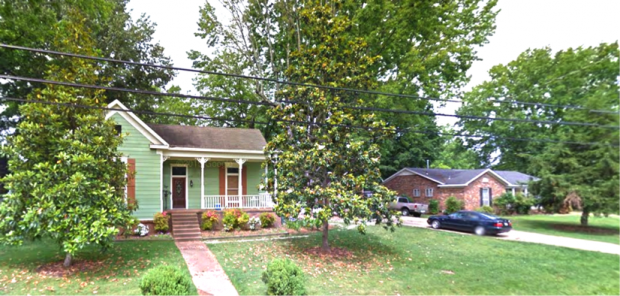Dulaney’s Districts
Putting neighborhoods on the National Register is an exhaustive, dedicated process. In this special series, the keeper of the Memphis Heritage Historic Properties Catalogue gives us snapshots of some wonderful but lesser-known historic neighborhoods.
Arlington Historic District
By John Dulaney
At least 20 National Register properties are located in Shelby County outside the City of Memphis. These include town centers, residences, and other sites in Arlington, Barretville, Bartlett, Collierville, Cordova, Eads, Germantown and Rosemark.
A good example is the Town of Arlington, which was added to the National Register in 1982.
At around 6 miles northeast of Memphis city limits, the population of Arlington has grown to almost 12,000. It is one of the fastest-growing communities in the State of Tennessee. However as recently as 1990, the population of this rural community was only 1541.

As stated in Memphis Heritage’s Historic Properties Catalogue: “Arlington still clearly resembles a small early twentieth century rural community, with its collection of relatively unchanged commercial and residential buildings dating from more than 100 years ago. The town’s future was ensured by the establishment there of a railroad depot, cotton gin, and businesses catering to the needs of local farmers. Annexation by, and growth of, the City of Memphis have altered many of its surrounding communities, but Arlington has not lost its historical character.”
“The four block area comprising the Arlington Historic District, which has always been the commercial and residential center of the town, contains forty buildings built primarily between 1880 and 1920,” reads the town’s National Register nomination. “The streets in the Arlington Historic District were small dirt roads until paved with asphalt in the 1930s. Board sidewalks were a turn of the century feature of Walker and Chester Streets. These have been replaced with concrete sidewalks. The streets are tree-lined and a strong visual sense of neighborhood exists.”
Commenting on some specific building styles featured in the Arlington Historic District, after pointing out that western Tennessee “was in general not as economically prosperous as other sections,” its nomination notes that “the rural architecture of West Tennessee . . . shows the strong influence of the Queen Anne, Craftsman, and Bungalow styles. . . . The commercial buildings within the district are especially fine examples of turn-of-the-century vernacular frame architecture, including two stores, a bank, and a hotel.”

Above Left: Arlington was originally called Haysville, named for General Samuel Jackson Hays who owned the land surrounding Arlington’s spot along the Memphis and Ohio Railroad. The Plan of Haysville was submitted with the district’s National Register nomination.

Above, the S. Y. Wilson general store today, from the store’s FaceBook page. The store was established in 1893, and sold by the Wilson family in 2015 to the Winstead family, who operate it as a store for sportswear and outdoor living.
Read more about Memphis’ National Register properties and all of Dulaney’s Districts featured throughout StoryBoard Memphis.
This article and all of Dulaney’s Districts originally appeared in print Issue X, the August 2019 Neighborhood Issue, front page and pages 12, 23-25.
Sponsored by Captain & Co. Real Estate, LLC for their “Memphis Mondays” series. Look for Captain & Co.’s Memphis every Monday.


